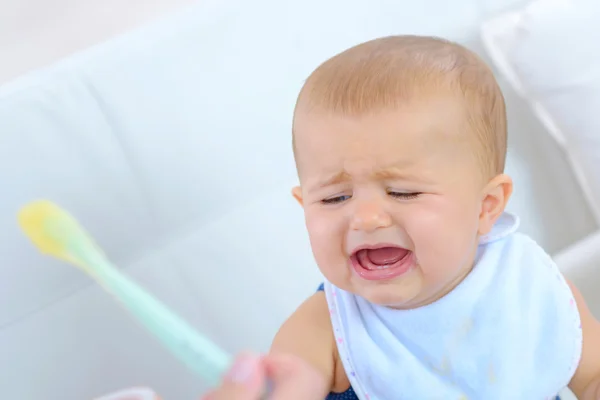Baby raccoons food
What Do Baby Raccoons Eat?
So you finally have your pet raccoon. You are now ready to start your adventure of raising a baby raccoon. So as you arrive home with your new pet, eager to take care of him, this is the first question you need to answer: What do baby raccoons eat?
If you wanted a head start on your relationship, you probably bought a raccoon that is still on the bottle, which means a very young raccoon. Purchasing a raccoon that is still on the bottle is necessary for the bonding process. But taking care of these critters is in itself a challenging and demanding task. You need to establish a friendly relationship with the animal from an early age. Such an approach will prove beneficial in the long run and you will experience fewer problems with your pet.
What To Feed Baby RaccoonsThis is your first encounter with the demanding task of having a pet raccoon. The question, “what do baby raccoons eat”, is quite simple: powdered milk with high fat content. Just keep in mind this important information — never feed your little raccoon whole milk.
If the food your new pet requires is quite simple, the how and when of feeding are a different story.
For about the first seven weeks of life, you need to feed the baby raccoon up to five times a day. To feed him at regular intervals, you will even need to wake up during the night and respond to his pleas for food.
How much food do baby raccoons eat? While they are nursing, they may easily overfeed. You must give your raccoon just enough to feel that his belly is full. Do not wait until he starts to refuse the milk because this is a sign that he has already had too much.
After each feeding you should burp the raccoon, and at the same time, using a cotton ball soaked in warm water, massage the genital area to help him relieve himself.
The first few weeks will definitely be an amazingly busy time for you and your new pet raccoon. But after the first few weeks, the baby raccoon will be ready to get into some solid foods.
Weaning a raccoon is not difficult, though some individuals may be harder to bottle-break than others.
When you see that your pet is big enough, usually around the seventh or eighth week, you can start to introduce some of the foods raccoons will eat as an adult.
After the bottle, your raccoon will begin to show his omnivorous side, and he can start to eat almost any kind of food. Even so, you should introduce the food gradually. You might, for instance, add baby cereal to the milk or give him a soft food like fruit that he is able to chew.
What Do Baby Raccoons Eat After WeaningAfter your baby raccoon has been weaned, the task of feeding the animal will still be demanding. It may be easier than bottle-feeding, but controlling your pet’s diet will always be your responsibility.
Raccoons living in the wild can eat practically anything, and their diets are pretty variable.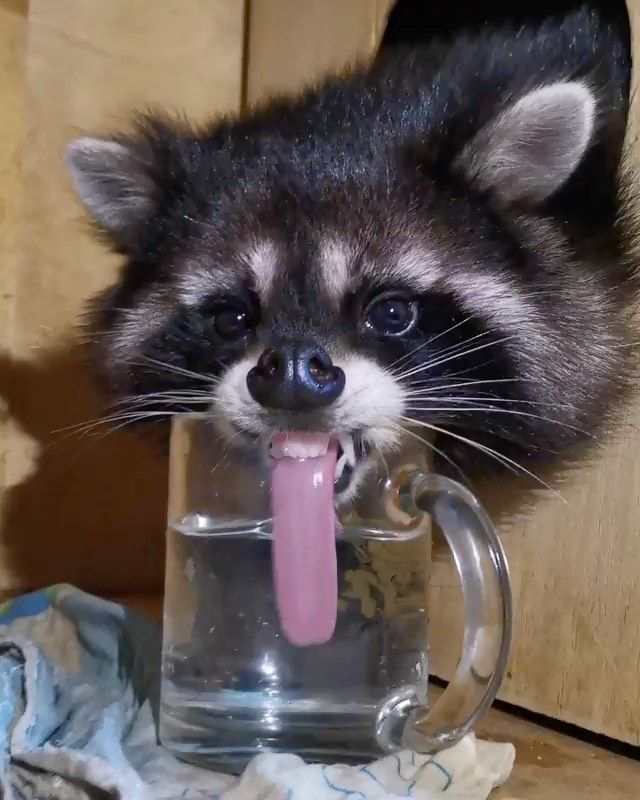 The wild raccoon diet depends on the animal’s personal instincts and the different seasons and habitats he is dealing with. In contrast, a pet raccoon cannot make his own decisions about food. He is completely dependent on you.
The wild raccoon diet depends on the animal’s personal instincts and the different seasons and habitats he is dealing with. In contrast, a pet raccoon cannot make his own decisions about food. He is completely dependent on you.
You cannot treat your raccoon like a dog or a cat; it is not that simple. These common pets can survive on canned food, but not your pet raccoon. He may love cat or dog food in the can, but feeding him only that is not healthy for the animal. Make sure to give your pet a variety of food items daily and to choose the healthiest ones.
What Do Baby Raccoons Eat?
As an Amazon Associate I earn from qualifying purchases.
Raccoons, like most other mammals, are excellent parents. They care for their young with diligence. When raccoon babies are born, the adult female raccoons leave the nest to forage for food to help them produce enough milk to feed their young. The babies are able to leave the nest after approximately 12 weeks of nursing. They’ll learn how to forage for food and where to search from their mother during this time.
They’ll learn how to forage for food and where to search from their mother during this time.
After nine months, baby raccoons are totally dependent on their mother for survival. The mother raccoons produce up to nine pups. She will only have two remaining after nine months, and she will look for a new partner in the winter to start another litter.
If you’re thinking about keeping a raccoon as a pet, you should be prepared to begin. So, when you get home with your new raccoon and are eager to care for him, the first thing you need to consider is: what does a newborn raccoon eat?
What Do Baby Raccoons Eat? A Baby RaccoonRaccoons are omnivores and will consume whatever they can get their hands on. However, baby raccoons are entirely reliant on their moms’ milk. To be able to produce a sufficient amount of milk, she regularly goes out to forage for food.
Baby raccoons are blind and mute for the first three weeks following birth, but they develop quickly. The baby raccoon will consume his or her mother’s milk until it is old enough to leave the nest during this time.
The baby raccoon will consume his or her mother’s milk until it is old enough to leave the nest during this time.
Raccoons make their nests in hollow trees or attics to keep their young safe. Coyotes are one of the most dangerous predators for baby raccoons. The youngsters will continue to reside with their mother throughout the first winter, at which time they will gradually depart.
It is not easy for a raccoon mom to raise their kid. While they generally feed their young on milk, they must be fed at all times. Raccoon mother raccoons feed their young every four hours, which implies they have to feed them five times a day on average. The mother raccoon spends the bulk of her time in the nest caring for her kids. The female has an obligation to nurture her young, and she accomplishes this on her own.
The newborn raccoons are ready to begin eating solid food after around six weeks. They’re introduced to insects, nuts, fish, berries, and frogs while they follow their mother and learn how to find food. Raccoons are very adaptable animals, and after a few more weeks, they will slowly start going their way and will be less dependent on their mother.
Raccoons are very adaptable animals, and after a few more weeks, they will slowly start going their way and will be less dependent on their mother.
If you’re new to the challenging job of raising a raccoon, this guide will get you up to speed on what baby raccoons eat. It’s easy to ask and understand what baby raccoons eat. powdered milk with high-fat content is fine. Remember, if you want your little raccoon to grow up healthy, never try to feed whole milk to it.
You must feed a newborn raccoon up to five times a day for the first seven weeks of his life. To feed him at regular intervals, you’ll have to get out of bed during the night and respond to his demands for food.
What exactly do baby raccoons eat? They may easily overeat while they are nursing. Just enough should be given to your raccoon so that he feels satisfied. Wait until he begins to refuse the milk before offering him any more.
Massage the genital region after each feeding, and burp the raccoon at the same time. To assist it to relieve itself, use a cotton ball soaked in warm water to massage the area around his genitals.
You and your new pet raccoon will have an exciting few weeks early on. However, the newborn raccoon will be ready to start eating solid foods after the first few weeks.
WHAT DO BABY RACCOONS EAT APART FROM BOTTLED MILK?It’s not difficult to wean a raccoon, although certain individuals may be more difficult to bottle-break than others. When your pet reaches the seventh or eighth week of age, you can start offering some of the adult raccoon’s meals.
After they’re done playing with the bottle, your raccoon will show his omnivorous side and may start to consume almost anything. Even so, you should gradually introduce the food. You could, for example, add baby cereal to the milk or offer him a soft meal like fruit that he can chew on.
WHAT DO BABY RACCOONS EAT AFTER THE WEANING PERIOD? Baby Raccoons Can Eat Fish After Weaning PeriodIt will still be difficult to feed your raccoon after the weaning period. It may be simpler than bottle-feeding, but you will always have to maintain an eye on your pet’s diet.
It may be simpler than bottle-feeding, but you will always have to maintain an eye on your pet’s diet.
Raccoons can eat just about anything in the wild, and their diet is quite varied. The raccoon’s wild food is determined by his natural instincts and the various seasons and habitats he encounters. In contrast, a pet raccoon has no choice but to follow your instructions. It is entirely reliant on you for its nutrition.
It’s difficult to compare your raccoon to a dog or a cat. It is not that simple. Although canned food can sustain these typical pets, it will not support your pet raccoon. It may consume cat or dog food in a can, however only giving him that isn’t good for his health. Make certain to provide your baby raccoon with a variety of meals items on a daily basis and select the finest ones.
Baby Raccoons will eat just about anything you put in front of them, and they can eat a lot. You may select from among a wide range of edibles. Fresh vegetables, uncooked corn on the cob, fish, fruit, poultry, grain-free dog food, and eggs are some popular pet raccoon staples.
You must also satisfy his predatory instincts and offer mice, minnows, or insects to him from time to time. If at all feasible, don’t make these goodies readily available to your raccoon. Place them in a plastic container, hide them, or release the minnows into a basin of water if possible. Raccoons like exploring and competitions, which means finding a method to get the food keeps them occupied. As a consequence, your raccoon will be more cheerful, less bored, and less destructive within your home.
How To Feed Baby Raccoons? A Baby Raccoon in The WildIf you come across an abandoned baby raccoon and believe he is orphaned, you may need to care for him. After it’s moved to a new location or lost, you’ll need to get him warm and hydrated, then feed him with a milk replacement solution. Baby raccoons can be poisonous and carry germs, so handle them carefully and wear gloves.
Step 1:Make sure it’s not too cold. A baby raccoon can’t stomach food until it’s at the right temperature. If your baby raccoon has been out in the cold, he’ll need to be warmed up before eating. Warming him with a soft blanket and a hot water bottle is sufficient until he feels warm to the touch.
A baby raccoon can’t stomach food until it’s at the right temperature. If your baby raccoon has been out in the cold, he’ll need to be warmed up before eating. Warming him with a soft blanket and a hot water bottle is sufficient until he feels warm to the touch.
By pinching the baby raccoon’s skin, check for dehydration. When you pinch the skin, or if the eyes are sunken, it may be severely dehydrated and should be taken to a veterinarian immediately. If it appears only slightly dehydrated, offer him a rehydration solution (also known as Pedialyte) right away.
Step 3:Choose how much to feed it. The quantity you offer your infant raccoon will be determined by its weight, so you’ll need to weigh it first in grams. Plan to give it 5% of its body weight in milliliters at each feeding after you’ve measured its weight.
Step 4:It’s best to feed it with an eyedropper. It will most likely be best if you feed your baby raccoon with an eyedropper at first since you can regulate the amount of fluid he receives. Express the milk gradually into its mouth while holding it on its belly or slightly upright. It’s normal for the baby raccoon to struggle with the eyedropper at first. You may need to squeeze your hand around its muzzle in order for it to maintain a grip on the dropper.
Express the milk gradually into its mouth while holding it on its belly or slightly upright. It’s normal for the baby raccoon to struggle with the eyedropper at first. You may need to squeeze your hand around its muzzle in order for it to maintain a grip on the dropper.
Put it in a bottle. You may be able to transition from feeding with an eyedropper to feeding with a pet bottle after you’ve mastered the technique. These are readily available at most pet retailers. Lay the raccoon facedown or slightly upright, as with the eyedropper. Massage the raccoon’s back from his neck to his tail base to encourage a purring response and stimulate sucking by inserting the nipple of the bottle into his mouth.
Step 6:Waste removal should be stimulated. This step is critical to your baby raccoon’s survival. Mother raccoons frequently stimulate their young to urinate and defecate by licking them. As a surrogate raccoon mother, you’ll need to massage the raccoon’s feces with a warm washcloth or a feather. This must be done before and after each feeding until the baby raccoon is able to discharge waste on its own.
This must be done before and after each feeding until the baby raccoon is able to discharge waste on its own.
Mix the two together. When your baby raccoon’s teeth begin to grow, you’ll need to start including solid foods in its diet. Begin by combining a bit of crushed kitten food with its formula. Feeding canned eggs, soft fruits, and oatmeal soon thereafter is a good idea (just make sure they’re real).
What Are The Natural Predators of Baby Raccoons?The northern raccoon is a species of mammal that has black masks and lives throughout North America. They are predators and scavengers, and their grizzled black, gray, or brown fur allows them to blend in with their surroundings. They are most recognizable for their dark masks.
Coyotes
Coyotes are powerful and versatile hunters, capable of consuming anything from large prey to rubbish. They will consume raccoons, both adult and juvenile alike. Coyotes hunt in packs, but one coyote is enough to kill a single raccoon.
Owls
Great horned owls, according to the Michigan Natural History website, are big birds that range in length from 18 to 25 inches and have wingspans of 48 to 60 inches. Despite the fact that their diet generally consists of little mice and rats, cats will consume larger animals including opossums, raccoons, and skunks. While they typically avoid eating adult raccoons, they have been known to kill and consume them.
Foxes
Foxes, like raccoons, compete for the same food sources and live in similar climates. If given the opportunity, foxes will devour small, young raccoons. Fox urine is effective as a raccoon repellent. Foxes are high-level predators that prey on a variety of species including rabbits and snakes.
Wolves
Wolves are predators that subsist on meat, and though they do a lot of scavenging, they are also good hunters. To bring down a large beast species, wolves will hunt in packs, but a solitary wolf can easily kill a raccoon. Wolves prey on raccoons as well as other rodents such as shrews and hares.
Large Cats
Raccoons are hunted by a variety of predators, including lynx, cougars, and pumas. If they have the opportunity, these huge predators assist to control the raccoon population. They can consume both juvenile and adult raccoons.
Humans
Raccoons are hunted for their fur and because they are considered pests. Raccoons will prey on chickens, which can lead to the spread of rabies. People will hunt raccoons using dogs and guns, capture them in traps or poison them. Some people will go after raccoons for food; however, others do it for the sake of competition.
How To Protect Baby Raccoons From Predators?Experienced raccoon parents build insulated and well-hidden dens, such as abandoned burrows of other animals or hollowed tree trunks, to avoid predators. Raccoons are able to get into areas that other animals cannot because of their hand movement and dexterity, which they use to pick up things in their environment and access places that would otherwise be inaccessible to other creatures.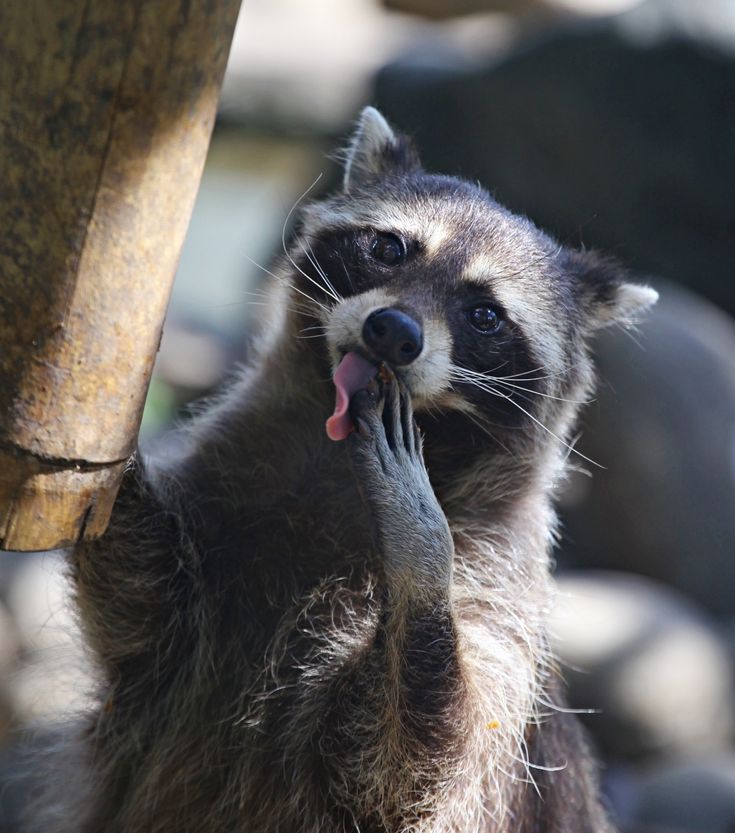
Infrequently maintained places, such as attics, barns, deck spaces, and basements, provide excellent security from virtually all dangers.
Amazon and the Amazon logo are trademarks of Amazon.com, Inc, or its affiliates.
What do raccoons eat in nature, what to feed at home
Raccoons are amazing animals that can charm almost anyone at first sight. Despite their cute appearance, raccoons are predatory mammals. First of all, they need food of animal origin. In the article we will find out what raccoons eat in nature and what you can feed a raccoon at home.
Contents
What raccoons eat in nature
All raccoons are omnivores. Depending on the species and habitat, the diet of raccoons includes food of both animal and vegetable origin. The diet of a raccoon, in addition to its habitat, also varies depending on the time of year. nine0003
In some regions, raccoons hibernate in winter to survive the cold and lack of food. For example, in Canada, hibernation lasts 4-5 months. In spring and early summer, raccoons especially need protein food.
In spring and early summer, raccoons especially need protein food.
Peak raccoon activity occurs at night. At nightfall, they go hunting. Thanks to vibrissae and good night vision, raccoons are perfectly oriented in the dark. Frogs, snakes, mice, lizards, turtles and various insects become their prey. Raccoons also catch and eat fish, crayfish, and crabs with pleasure. nine0003
In their natural environment, raccoons attack and destroy bird nests in order to feast on eggs and even cubs. In the event of a successful hunt, raccoons also eat small birds.
In late summer and autumn, the diet of the raccoon consists mainly of plant foods. It feeds on berries, fruits, nuts, acorns. In some countries, raccoons are considered real pests. They raid fields and plantations, destroying crops.
Raccoons often live near humans. They rummage through garbage and landfills in search of food. The most daring can enter a person's home to get something tasty. If cats or dogs live in the house, raccoons are happy to eat leftover dry food from bowls.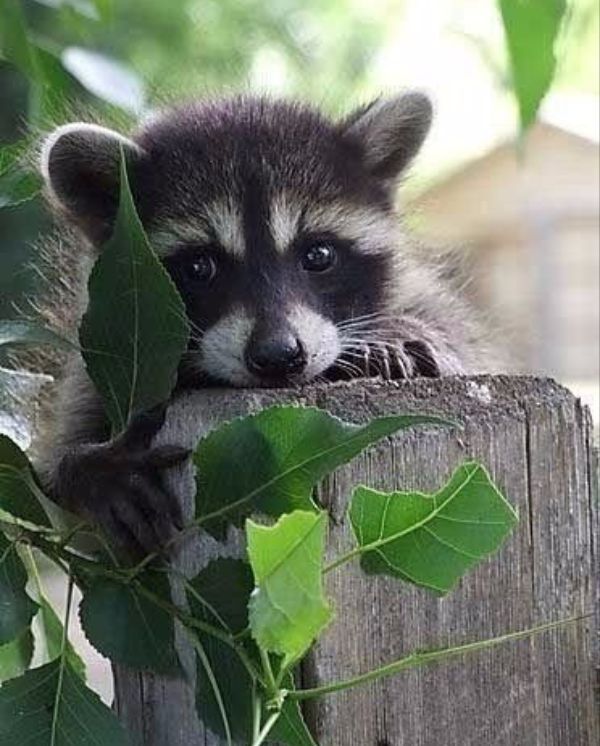 In search of food, raccoons can leave their homes for distances of up to several kilometers. nine0003
In search of food, raccoons can leave their homes for distances of up to several kilometers. nine0003
Feeding a raccoon at home
In the wild, raccoons determine the quality and quantity of food on their own. At home, the owner should take care of this. The life expectancy of a raccoon depends primarily on proper nutrition.
There are only 4 species of raccoons in nature. The most popular and widespread species is the raccoon. The representative of this species got its name because of the peculiarity of its behavior: rinsing food in water before eating it. This type of raccoon is suitable for keeping at home. nine0003
At home, raccoons can be fed meat, cereals, fish, seafood, vegetables and fruits. You should also introduce milk, cottage cheese, eggs, nuts, dried fruits into the diet.
Meat
Only lean meat is suitable for raccoon. You can give turkey, chicken, rabbit, beef, veal. Fed raw or boiled. You can also grind and cook minced meat, which is added to cereals.
In addition to meat, raccoons are also fed offal: liver, stomachs, hearts. nine0003
Fish and seafood
Only lean varieties of fish are suitable for raccoons. Pollock, cod, hake, blue whiting, flounder, sea bass, tuna, shrimp, crabs.
Vegetables, fruits and berries
Fruits and berries contain a lot of sugar. When consumed in large quantities, it can cause obesity, which negatively affects the health of the pet. Therefore, they are given in small quantities as a treat.
From vegetables, raccoons can be given carrots, zucchini, pumpkin, asparagus, corn, green peas, olives. From fruits and berries, apples, pears, peaches, plums, melons, watermelons, bananas, cherries, cherries, grapes, strawberries, strawberries, blueberries, gooseberries, kiwis, figs, raspberries, currants, mulberries are suitable. nine0003
Porridge
This is a very healthy and nutritious food. Porridge can be offered to the raccoon separately, or meat products can be added to it. You can cook porridge from buckwheat, rice, oatmeal, oatmeal, you can also give corn flakes, granola or muesli.
You can cook porridge from buckwheat, rice, oatmeal, oatmeal, you can also give corn flakes, granola or muesli.
Feeding considerations
The owner must be careful and strict. These charming animals are very fond of begging for various sweets and forbidden foods. You should always remember that, succumbing to a provocation, you can harm your pet. Such rewards often lead to obesity and digestive upset. nine0003
The raccoon's digestive system is a weak point. Up to 1 year after each feeding, babies need to do a tummy massage. Massage ensures the passage of food through the gastrointestinal tract.
New raccoon foods should be introduced gradually. After feeding, observe the well-being of the pet and the stool. If there is no negative reaction from the body, then the product is suitable for feeding.
How much to feed
Babies under 1.5 months old need to be fed every 3-4 hours. Adult raccoons need three meals a day. Since the peak of activity occurs at night, it is necessary to feed the raccoon in the late afternoon. Usually the first meal is before bedtime, the second in the evening, the third at night. nine0003
Usually the first meal is before bedtime, the second in the evening, the third at night. nine0003
Raccoons at the age of 3 months can already be transferred to self-feeding from a bowl. From 6 months, you can start introducing vegetables, berries and fruits into the diet.
What else can you offer raccoons
Dairy products
Domestic raccoons need a varied diet. Including, it is necessary to gradually introduce dairy products: milk, cottage cheese, yogurt, kefir, fermented baked milk, sour cream, cottage cheese curds.
Nuts and dried fruits
Nuts and dried fruits should not be fed in large quantities. Nuts are too fatty and dried fruits are high in sugar, both of which can make you fat. Nuts and dried fruits are given to raccoons as food or treats. Allowed nuts: almonds, hazelnuts, walnuts, pistachios. nine0003
What not to feed a raccoon
Raccoons are very cunning and inventive animals, especially when it comes to food. In order not to harm the pet, in no case should food be left unattended. You should also store food out of the reach of the raccoon. All cabinets must be tightly closed.
You should also store food out of the reach of the raccoon. All cabinets must be tightly closed.
Do not give to raccoons:
- flour;
- confectionery;
- sweets and chocolates;
- acute;
- fried, smoked
- salty;
- citrus fruits;
- red fish.
What do raccoons eat in the wild and among people? -the nature of the world
Home »Question-answer
Reading time 2 min. Sambs 1.2k. Explore
Content
- Plants
- Animals
- garbage
ANOTA They have distinctive black masks and ringed tails that make them easy to recognize. They are primarily nocturnal, although they occasionally come out during the day to find food. In winter, raccoons spend a lot of time in their burrows, but do not hibernate. They are omnivores and consume many different types of food. As a general rule, raccoons shape their diet based on habitat to accommodate what is available locally, especially if they live near humans. nine0003
As a general rule, raccoons shape their diet based on habitat to accommodate what is available locally, especially if they live near humans. nine0003
Plants
Fruit is important to raccoons. They consume a lot of apples, blackberries and cherries when they are available. In winter, nuts, acorns and beans are indispensable, as well as various seeds and grains. In areas where humans plant fields, raccoons typically add corn to their diet if available. They can come to the same place many times and steal crops.
Animals
Raccoons consume aquatic animals such as frogs, turtles and crayfish. Their diet includes many different types of small mammals, including mice, bats, voles, muskrats, and rabbits. Raccoons also do not disdain ducks and other birds, unless of course they can catch them. Other animal species that make up the diet of raccoons are snakes, fish, and freshwater mussels. They tend to focus on a carnivorous diet in the spring, while they are mostly herbivorous in the summer and fall.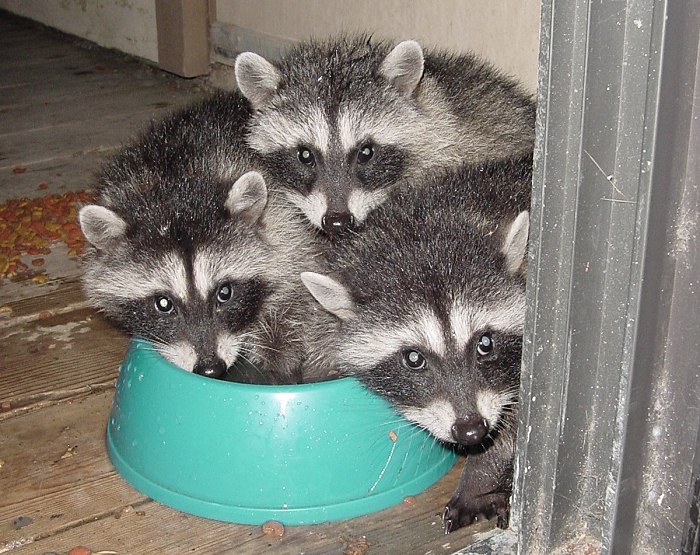 nine0003
nine0003
Other Foods
Because raccoons are opportunists, they will eat just about anything they can find. Turtle, duck, and any other eggs they find will be a great source of nutrients. Earthworms and insects are another important part of a raccoon's diet, especially in the spring before fruits, nuts, and grains appear. Individuals that live near humans supplement their diets with any food stolen from homes, including even dog and cat food, and sometimes small kittens. nine0003
Garbage
Raccoons that live close to humans like to gut garbage cans in search of food. They are able to climb into the tent and even open the deadbolt in the house and steal food. Dead animal carcasses provide easy food for raccoons, as carrion is an important part of their diet.
Googlemag
Ask! Do not be shy!
Ask a question
Didn't find everything? Use site search
Search for: window.yaContextCb.push(()=>{ Ya.Context.AdvManager.render({ renderTo: 'yandex_rtb_R-A-1753459-15', blockId: 'R-A-1753459-15' })})"+"ipt>"; cachedBlocksArray[271966] = "window.

